During her service life, the St. Roch had different aerial arrangements which were dictated by operational requirements. This is what was found in the existing records.
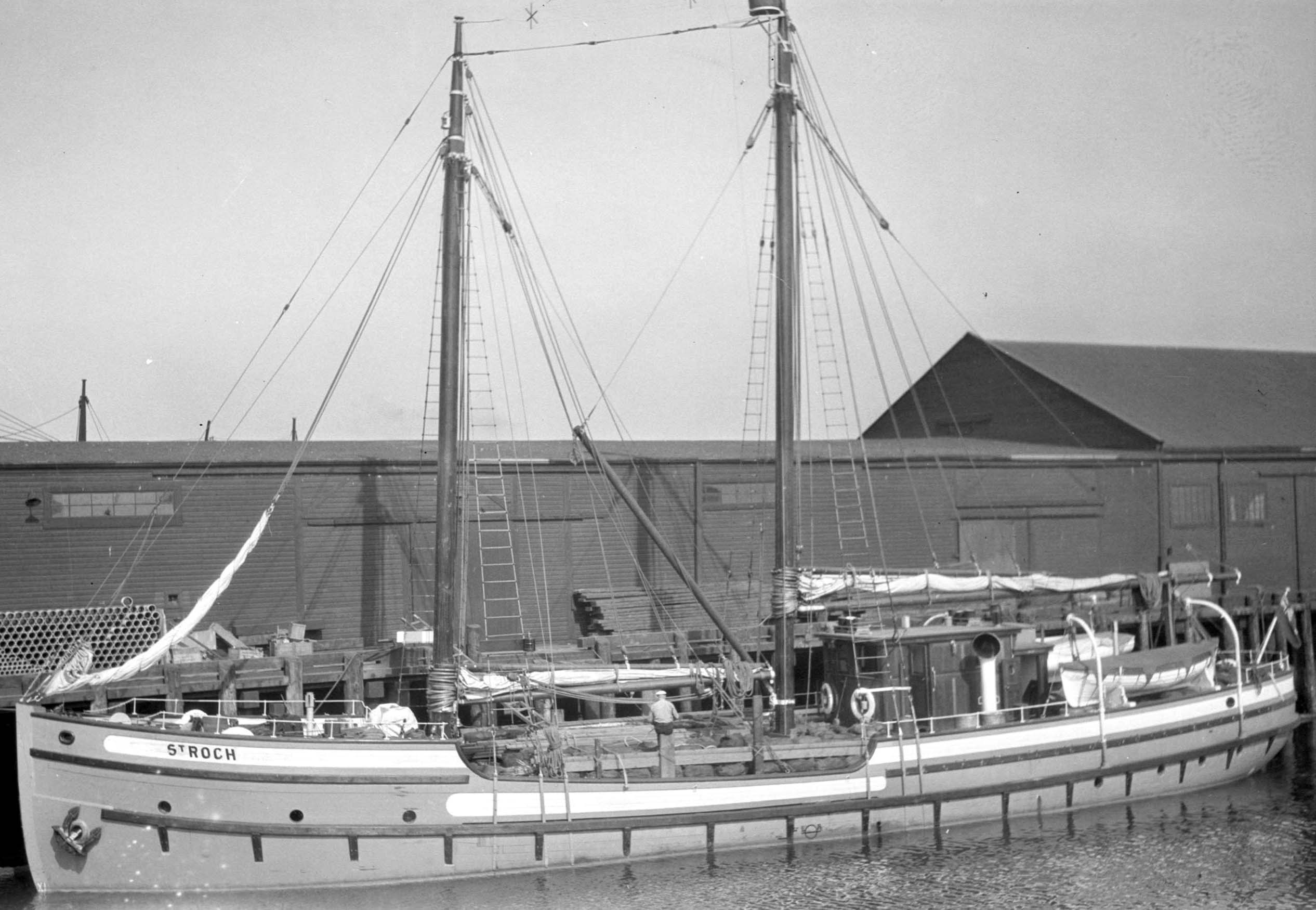 |
| UNDATED: Note the wire cage antenna mounted between the foremast and main mast. Download image to enlarge, Based on the name board and paint scheme and the wire cage antenna, this photo was from the ship's earlier days. (VMM photo # HSDO-20-02) |
 |
| This closeup of the wire cage antenna shows a bit more detail. At the left, the spreader can be easily seen , but the rightmost spreader is barely peeking into the picture. A wire cage antenna improves bandwidth when compared with a single wire dipole antenna A lot of shipboard radio installations typically covered LF to HF frequencies and, because of the dimensions of the ship in which they were installed, the antennas were less than optimal. |
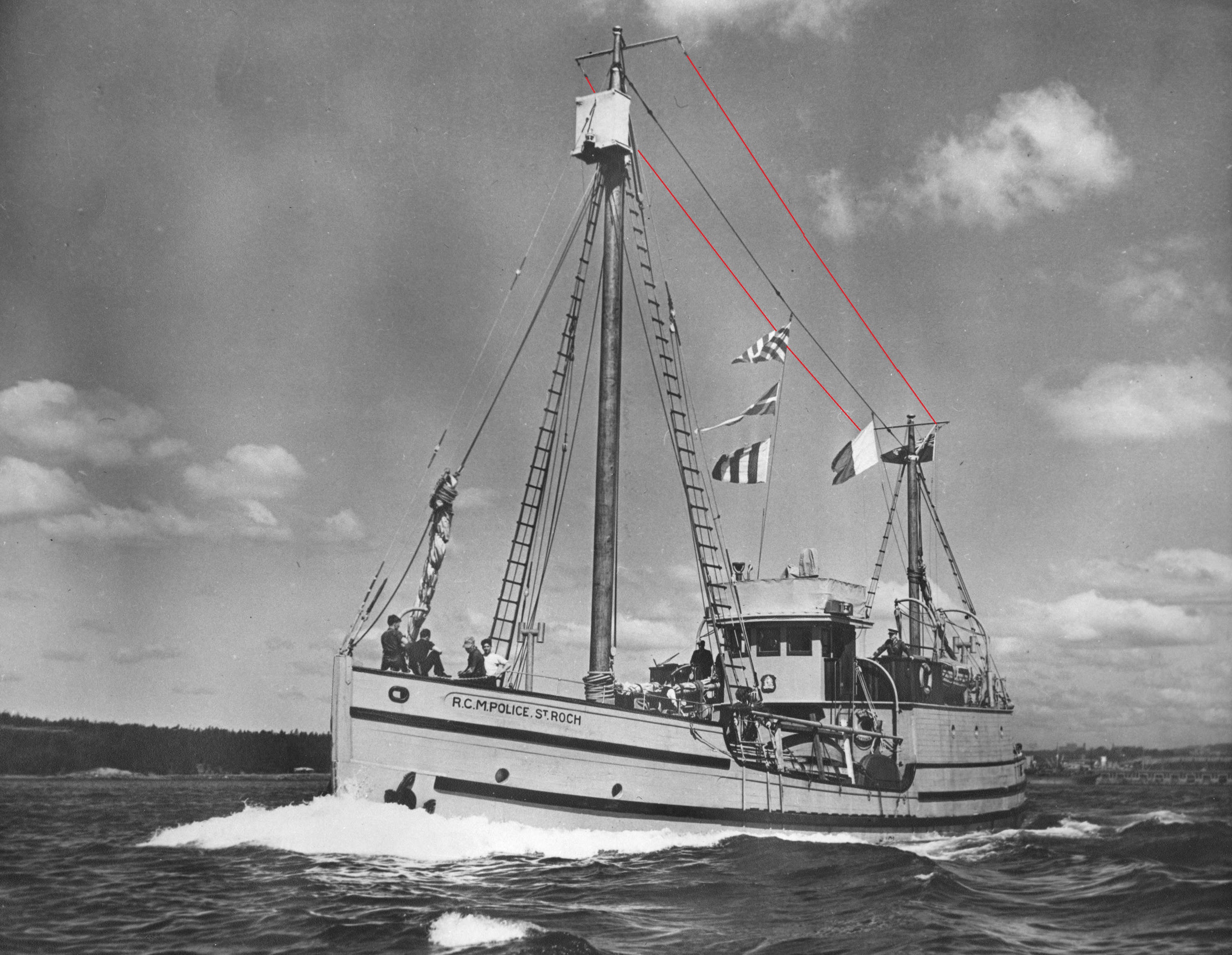 |
| St. Roch leaving Halifax in its post 1944 configuration. Long gone is the wire cage antenna between the masts. Now we see two flattop antennas which have been marked in red to make them easier to see. They are mounted to the yardarms on the foremast and main mast. The vertical portion of these flattops can barely be seen. Download image to enlarge. Does anyone know the year when the ship's name board changed from ST. ROCH to RCMPOLICE ST.ROCH ? The "RCMPolice St. Roch" name was present when St. Roch left the West Coast in June of 1940 (LAC photo PA 121409) |
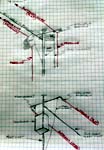 |
With this hand drawn sketch, Tom Brent provides some additional details about the arrangements at the top of the foremast and mainmast. Click on thumbnail to enlarge. |
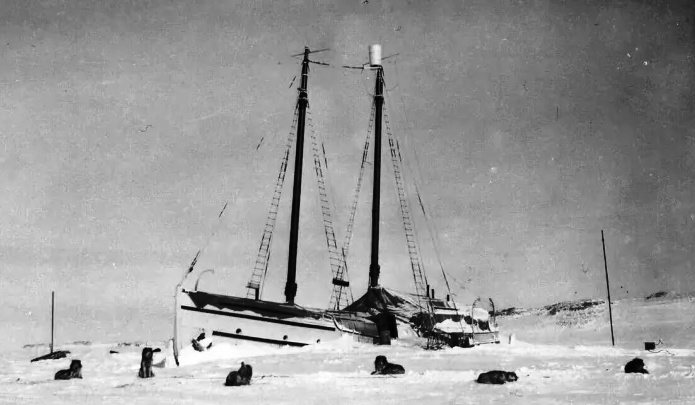 |
| UNDATED: The St. Roch is trapped in
ice at Tree River, Coronation Gulf, NWT 1930. (Photo: McCann
Archives. Parks Canada St. Roch Research Collection)
John Duke was the radio operator on the St. Roch around 1930-33 when they froze in at Tree River, Nunavut. He had scrounged some poles, perhaps from Coppermine, and as the ice was forming, he let them freeze in the ice It is believed he rain an antenna from the mast of the ship to a pole in the ice. This diary extract provides some details on the antenna's construction. "Rigged aerial poles and erected them with help of crew. S.W. Pole 40 ft high. Aerial 64’ 8 1/2 Feeders off 6” 2 1/2 “ from centre - spaced 14” apart. Tested with VBK - OK. " In evidence are the yardarms on the fore and main masts which support two flattop wire antennas. At the left and right side of of the photo are two poles. Since St. Roch was trapped in the ice and for a very long time, it is believed that it would make sense to string out a longer and more effective antenna. Even a simple half wave dipole would offer increased directivity and gain when compared to the on-board antennas, thus improving communications. |
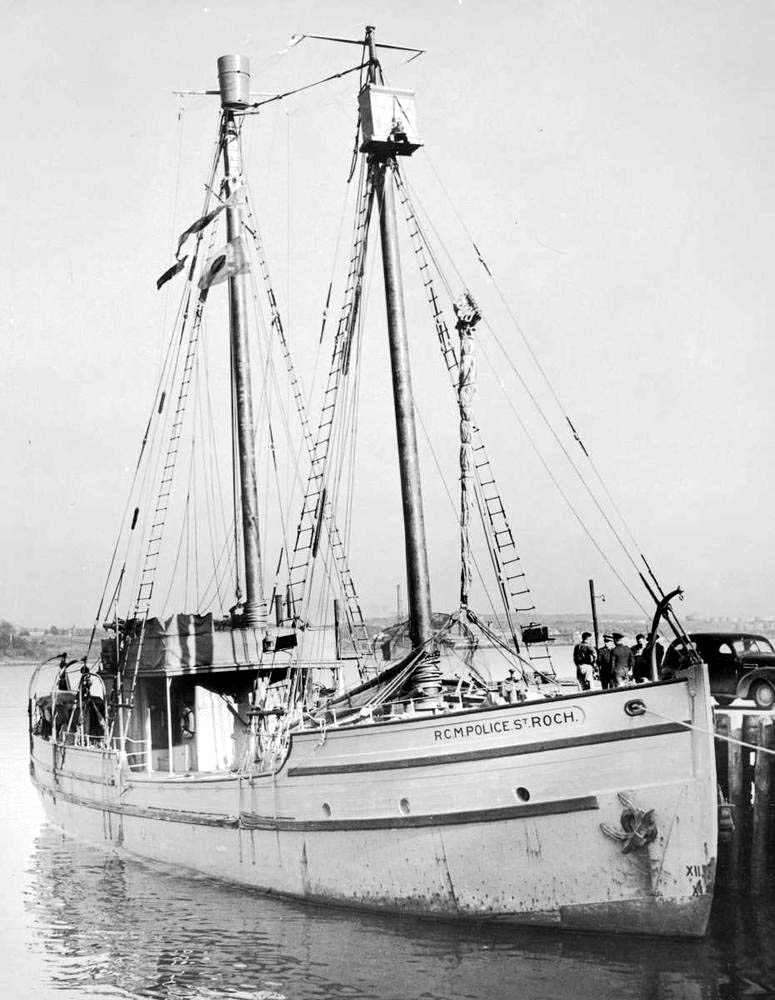 |
| CIRCA 1939: Sometime after the above photo was taken, the main mast was removed and replaced with a shorter one. In this configuration, the foremast now gets renamed as the mainmast and the one astern becomes a mizzenmast. The automobile on the jetty is a 1939 Plymouth .(Photo credit unknown) |
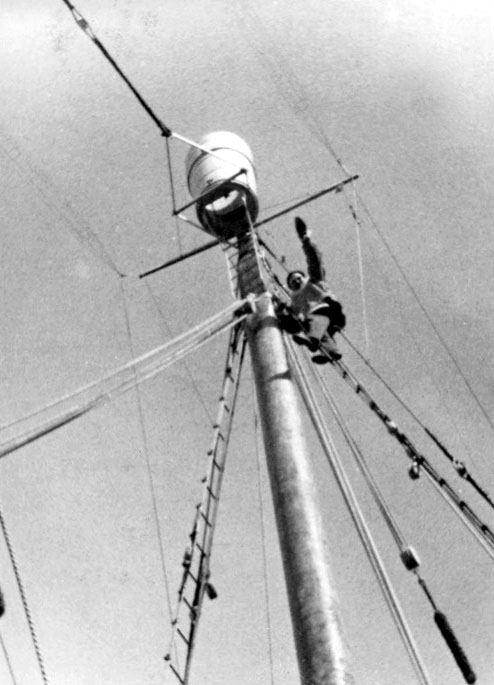 |
| 1940-41 Man Aloft. This photo shows the presence of dual (port and
starboard) cage antennas (Photo by the late Constable John
Friederich)
The St. Roch was in Pasley Bay, NWT (now Nunavut) in October 1941. This extract from page 811 of the Larsen memoirs indicates some broadcast activity. "We also established a bi-weekly radio schedule with Coppermine (now Kugluktuk, Nunavut). Soon everyone in the Arctic had news of our whereabouts. Our old friend Lawrence Learmouth, the Hudson’s Bay post manager at Gjoa Haven NWT (now Nunavut) some 200 miles away could hear our broadcasts but could not contact the St. Roch because he didn't have a transmitter ” |
Tom Brent summarizes: "There appears to be three different antenna systems for St. Roch:1) The initial one was a single cage antenna, shown in the photo taken in 1929 at the dock in Vancouver.
2) The second configuration was a dual cage antenna made possible by modification/addition of yard arms to support a port and starboard antenna. This is best shown in the 1940-41 photo that shows a seaman aloft.
3) The third configuration was single wire port and starboard antennas (not cages) best shown in the photo of St. Roch leaving Halifax."
 |
| On November 15, 1978, Canada Post issued this 14 cent stamp to commemorate the voyages of the St. Roch. A total of 9,024,000 stamps were issued. Constructed of thick Douglas fir timbers and sheathed with durable Australian gumwood, she had toughness, a quality needed to survive the Arctic. . (Canada Post image) |
Dec 24/19